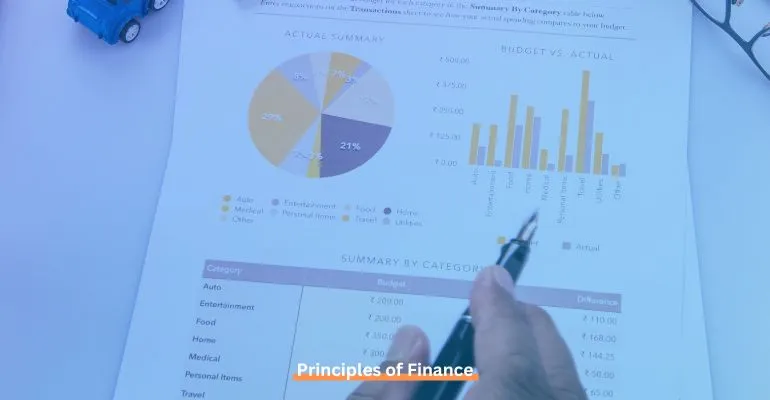In today’s dynamic financial landscape, strategic financial planning is more crucial than ever for securing a prosperous future. As individuals face an array of financial choices and challenges, having a clear, well-structured plan can make all the difference in achieving long-term success. “Strategic Financial Planning: Smart Finance Insights for a Brighter Future” offers a comprehensive guide to mastering the art of financial strategy. This article delves into essential techniques for setting clear goals, managing your budget, investing wisely, and preparing for unexpected events. By understanding and applying these smart finance insights, you can pave the way for a more secure and rewarding financial future.

Understanding Strategic Financial Planning
What is Strategic Financial Planning?
Strategic financial planning entails establishing long-term financial objectives and creating a detailed strategy to accomplish them. This process includes assessing your current financial situation, defining your financial objectives, and creating a roadmap to reach those goals. Effective strategic financial planning helps you manage your finances wisely and prepare for future financial challenges.
Why is it Important?
Strategic financial planning is crucial for several reasons. It provides a clear direction for your financial decisions, helps you allocate resources efficiently, and ensures that you are prepared for unexpected expenses. Additionally, it allows you to make proactive adjustments to your financial strategy as your circumstances change, helping you stay on track toward your goals.
Key Components of Strategic Financial Planning
Setting Financial Goals
Short-Term vs. Long-Term Goals
When setting financial goals, it’s important to differentiate between short-term and long-term objectives. Short-term goals might include saving for a vacation or paying off credit card debt, while long-term goals could involve retirement savings or purchasing a home. Clearly defining these goals helps you prioritize and allocate your resources effectively.
SMART Goals
Utilize the SMART criteria—Specific, Measurable, Achievable, Relevant, and Time-bound—to set your financial goals. This approach ensures that your goals are clear, realistic, and attainable within a specified timeframe, making it easier to track your progress and stay motivated.
Budgeting and Expense Management
Creating a Budget
Develop a detailed budget to track your income and expenses. Organize your expenses into categories such as fixed costs (e.g., rent, utilities) and variable (e.g., dining out, entertainment) expenses. A well-structured budget helps you manage your money more effectively and identify areas where you can cut costs.
Monitoring and Adjusting
Consistently evaluate your budget to make sure it accurately represents your present financial status. Adjust your spending and savings habits as needed to stay on track with your financial goals. Monitoring your budget helps you maintain control over your finances and make informed decisions.
Investing for Growth
Diversification
Diversify your investments to manage risk and maximize returns. Distribute your investments among different asset classes, including stocks, bonds, real estate, and mutual funds. Diversification helps protect your portfolio from market volatility and enhances the potential for long-term growth.
Long-Term vs. Short-Term Investments
Consider your investment horizon when choosing between long-term and short-term investments. Long-term investments, such as retirement accounts or real estate, typically offer higher returns but require a longer time to mature. Short-term investments, such as savings accounts or short-term bonds, provide liquidity but may offer lower returns.
Saving and Emergency Funds
Building an Emergency Fund
Establish an emergency fund to cover unexpected expenses, such as medical bills or car repairs. Aim to save three to six months’ worth of living expenses in a separate, easily accessible account. Having an emergency fund provides financial security and helps you avoid debt in times of crisis.
Automating Savings
Set up automatic transfers from your checking account to your savings or investment accounts. Automating savings ensures consistent contributions and helps you stay disciplined in building your financial reserves.
Implementing Your Financial Plan
Tracking Progress
Regularly assess your financial plan to ensure you are making progress toward your goals. Use financial tracking tools and software to monitor your income, expenses, investments, and overall financial health. Tracking progress helps you stay accountable and make necessary adjustments.
Seeking Professional Advice
Consider consulting with a financial advisor to gain expert insights and personalized recommendations. A financial advisor can help you refine your strategy, navigate complex financial decisions, and provide guidance based on your unique situation.
Conclusion, Strategic financial planning is a powerful tool for securing your financial future and achieving your long-term goals. By setting clear objectives, creating a detailed budget, investing wisely, and maintaining an emergency fund, you can build a strong foundation for financial success. Regularly monitoring your progress and seeking professional advice when needed will further enhance your ability to make informed decisions and adapt to changing circumstances. Embrace these strategies to pave the way for a brighter, more financially secure future.




